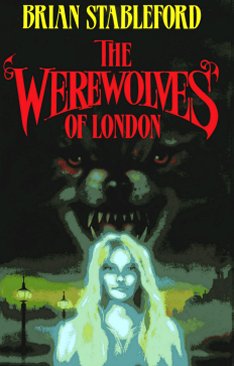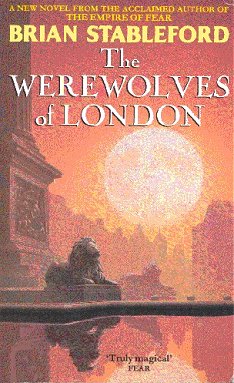| Home |
| Novels |
| Collections |
| Translations |
| Non-Fiction |
| Short Stories |
| Anthologies |

W hile Lydyard takes pains to hide his condition from his rigidly sceptical guardian, who is also the father of the girl he loves, Gabriel conceals his from the nuns who run the orphanage where he is confined. But there are others interested in the powers which they are acquiring: the heretic priests of the secret Order of St. Amycus; the occultist and reputed Satanist Jacob Harkender; and the legendary werewolves of London.
Whatever plans these others have for the use of Lydyard's and Gabriel's powers might easily be rendered insignificant by the schemes and conflicts of the fallen angels themselves; but these beings, though they have the power to work miracles, have awakened from their long rest to find a world very different from the one they knew previously. In order to understand this new world, and to discover what roles they might play in it, they need the use of human eyes and human minds.
The powers which Lydyard and Gabriel hold are not without cost: pair amplifies their powers of vision, and those who are eager to use them are prepared to hurt them as well as to seduce them. As they are gradually drawn into a deadly contest between forces of godlike power their sanity and survival are threatened, and they must turn for aid to the powers of scientific reason possessed by Sir Edward Tallentyre, and to the werewolf Pelorus, renegade from his own man-hating kin.
As the fallen angels move towards 'their final confrontation in a strange private Hell, their pawns must move with them, struggling for their own lives and perhaps for the fate of the world.
Cover art by Danny Flynn; Jacket design by Terry Griffiths
Published by Simon & Schuster in July 1990
ISBN: 0-671-71711-1

In 1872, David Lydyard accompanies his guardian to Egypt. Lured into a search for the 'real' Egypt by a priest they encounter a land of tombs and snakes and fiery desert demons...
David now finds himself possessed by uncanny visionary powers. At the same time Gabriel, a foundling boy brought up by nuns, experiences a mysterious force developing within him.
Others covet these powers for their own purposes... the heretic priests of the secret Order of St Amycus, the occultist and reputed Satanist Jacob Harkender... and the legendary werewolves of London.
'By far the best book he has ever written, a scientific romance of very great scope... the most intelligent novel yet published in 1990' - INTERZONE
'So absorbing... you're in for some surprises, right up to the last page' - LOCUS
Cover art by Keith Scaife
Published by Pan in March 1992
ISBN: 0-330-32267-2

An extraordinary story of suspense set in 1872, The Werewolves of London examines the similar plights of David Lydyard and Gabriel Gill, a young man and a small boy who find themselves possessed by uncanny visionary powers David and Gabriel are unknowing hosts for enormously powerful beings - the fallen angels of Biblical mythology.
While David takes pains to hide his condition from his rigidly skeptical guardian, Gabriel conceals his from the nuns who run the orphanage where he is confined. But there are others who know of the powers which the two young men are acquiring: the heretic priests of the secret Order of St. Amycus; the occultist and reputed Satanist Jacob Harkender; and, of course, the legendary werewolves of London.
Whatever plans these others have for the use of David's and Gabriel's skills might easily be rendered insignificant by the schemes and conflicts of the fallen angels themselves; but these beings, though they have the power to work miracles, have awakened from their long rest to find a world very different from the one they knew previously. In order to understand this new world, and to discover what roles they might play in it, they need the use of human eyes and human minds.
The abilities which David and Gabriel have are not without cost: pain amplifies their powers of vision, and those who are eager to use them are prepared to hurt them as well as to seduce them. As they are drawn into the deadly battle between forces of godlike power, their sanity and survival are threatened, and they must turn for help to a scientist and a renegade werewolf.
As the fallen angels move toward their final confrontation in a strange private Hell, their pawns must move with them, struggling for their own lives and perhaps for the fate of the world.
The Werewolves of London is a spectacular opening to a highly stimulating and inventive new trilogy.
Cover design by Tony Greco & Associates.
Published by Carroll & Graf in December 1992
ISBN: 0-88184-916-2
ISBN: 0-786-70180-3
Translated into French as: Les
Loup-garous de Londres.
Translated into Italian as: Il
Risveglio dei Creatori.
Translated into Polish as: Wilolaki
z ondynu.

